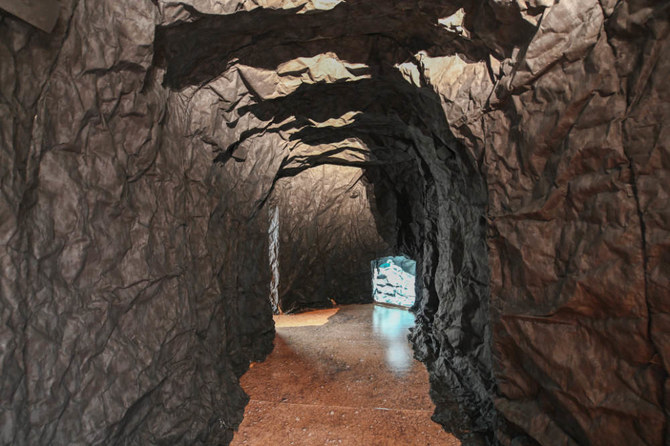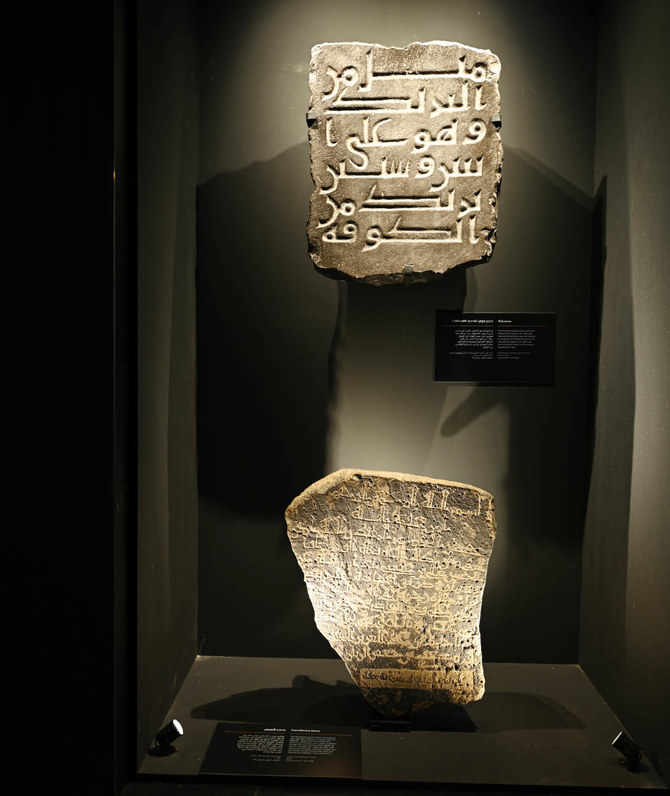DHAHRAN: For the last 1,400 years, the story of the great migration that Prophet Muhammad undertook has been one of the region’s most continuous narratives, a tale that has been fondly repeated by Muslims for centuries.
To mark the occasion, the King Abdulaziz Center for World Culture (Ithra) in Dhahran is celebrating the Islamic new year with a new exhibition called Hijrah: In the Footsteps of the Prophet.
While the actual Hijrah is arguably the most important historical event in Islam, this journey from the past remains relevant to this day because of migration and forcible movement.
Many people have had to move from one land to another to escape conflict or find greater freedom. Many have settled in a land that was not their own and establish a new community.
The journey the prophet took between Makkah and Madinah shaped the beginning of Islam and was the launch of a civilization that now includes 1.5 billion Muslims globally.
HIGHLIGHTS
• The journey the Prophet took between Makkah and Madinah shaped the beginning of Islam and was the launch of a civilization that now includes 1.5 billion Muslims globally.
• The 400-kilometer distance between the two holy cities in those eight days has created an immeasurable impact on the social, political, and economic landscape of the Arab Peninsula.
• The significance of the Hijrah can be defined as the transition from the practice of Islam as an act of worship to a way of life, and the Ithra exhibition presents that journey to modern audiences.
The 400-kilometer distance between the two holy cities in those eight days has created an immeasurable impact on the social, political, and economic landscape of the Arab Peninsula.
The significance of the Hijrah can be defined as the transition from the practice of Islam as an act of worship to a way of life, and the Ithra exhibition presents that journey to modern audiences.
On the exhibition’s opening night last month, curator Dr. Idries Trevathan offered tours with tidbits and anecdotes to bring the story of the prophet’s journey to life.
He was particularly excited to share insights with non-Muslim visitors to educate and inform them of what the experience was like.
A nasheed that the Ansar chanted for the prophet upon his entrance into Madinah was recited by vocalists in Arabic, English, Urdu, and Indonesian.
Trevathan has been with Ithra over the last eight years and is its expert on Islamic art history. He studied at the Prince’s Foundation School of Traditional Arts and built the center’s Islamic art collection from the ground up.
Historical artifacts and contemporary pieces help to breathe life into an event that took place centuries ago.
Featuring about 70 academics and artists from 20 countries, the inclusive and immersive experience celebrates the journey itself and also commemorates the occasion of the 1444 Hijri New Year.
“This is a very special exhibition because it's three years in the making—we started just before the COVID-19 pandemic. What's been extraordinary about this journey for us is that we were able to bring extraordinary minds together,” Trevathan told Arab News.
This exhibition exemplifies Ithra’s wider mission to tell the world’s defining stories through art, heritage, culture, and research.
Abdullah Al-Rashid, Ithra director
“We started by working closely with Dr. Abdullah Alkadi, who's considered the authority on the Hijrah route, the exact Hijrah route that they took. What's amazing about his work is that he's corrected all previous narrations or previous research on the Hijrah route. When we did some background research, we realized that, despite its importance, no one has ever attempted to do an exhibition on the Hijrah.”
Among the must-see installations are a recreation of the spiderweb, the caves, and even a life-sized replica of the camel upon which the prophet rode into Madinah.
Documentaries and videos are spread throughout the exhibition, with accompanying Arabic and English audio, recounting the route based on narrations.
Using language, poetry, and recordings of the call to prayer, the exhibition offers visitors an opportunity to be transported to the holy lands. Many things on display are being shown publicly for the first time.
“The Hijrah route is inaccessible by car. You literally have to walk it. It goes through meandering little valleys, and it's very rocky. I think a lot of you when you think of Hijrah abroad, people outside Saudi Arabia think of the sand dunes. It's not. It's mountainous and it's a really difficult terrain,” added Trevathan.
Dr. Abdullah Hussein Alkadi, professor of urban and regional planning at Imam Abdulrahman Bin Faisal University, is considered an expert for his groundbreaking research on the travel routes that the prophet and his companions took.
The Hijrah route is inaccessible by car. You literally have to walk it. It goes through meandering little valleys, and it’s very rocky.
Dr. Idries Trevathan, Curator
His books are among the most valued in the field, and Trevathan was adamant about including the works of his academic hero. He was thrilled when Alkadi agreed to be part of the project.
“My life has been determined by my quest to study and experience not only the exact route the prophet and his companions took across the desert but also the wider story, life, and legacy of this journey,” Alkadi said.
“It has been a journey that has occupied me for some 40 years and, with this exhibition, we are presenting new research, methodologies, and findings based on extensive fieldwork that will redefine perspectives on this historic migration. The relevance of this story is just as strong today; it serves to demonstrate and remind us of the reasons why people choose to move from one place to another and asserts the right to practice your beliefs.”
The exhibition is presented in collaboration with the National Museum of Saudi Arabia in Riyadh, the House of Islamic Arts in Jeddah, the King Abdulaziz Complex for Endowment Libraries in Madinah, and Turquoise Mountain, a Prince of Wales charity supporting arts and heritage in the Middle East.
Contributors to the exhibition include internationally renowned Saudi artists, well-known photographers, scholars, academics, such as the president of Zaytuna College in Berkeley, which is the first accredited Muslim liberal arts college in the US, and the Turquoise Mountain Institute of Afghan Arts and Architecture in Kabul.
“As one of the most detailed studies ever of the history and topography of the Hijrah, this exhibition exemplifies Ithra’s wider mission to tell the world’s defining stories through art, heritage, culture, and research,” said Ithra director Abdullah Al-Rashid.
“This exhibition represents significant advances in academic research around the history of Islam while its focus on the human story surrounding the journey and our shared human values will also promote greater understanding, empathy, and tolerance.”
The exhibition will run at Ithra for nine months. It will then move on to other parts of the Kingdom. It will also head overseas.






























